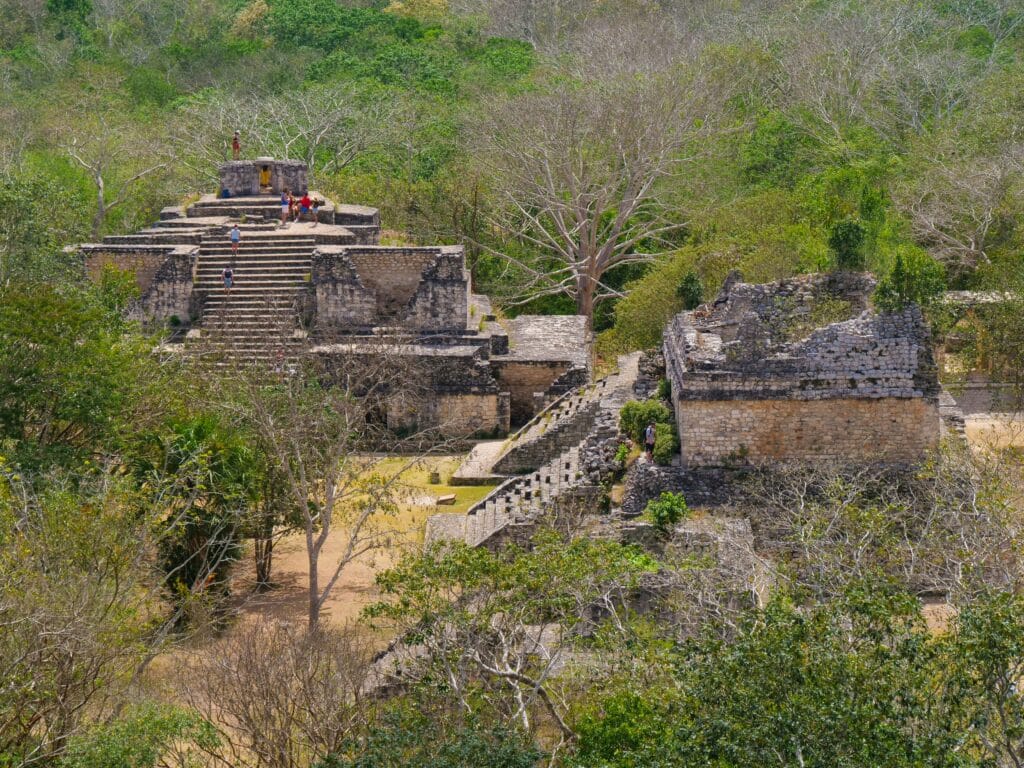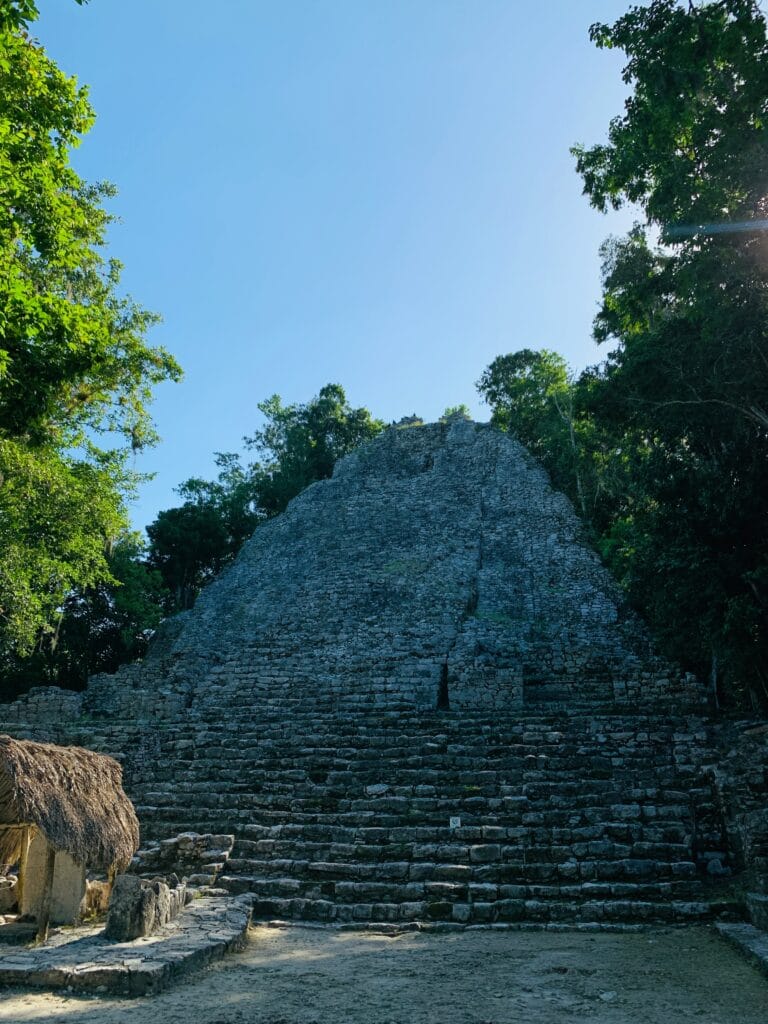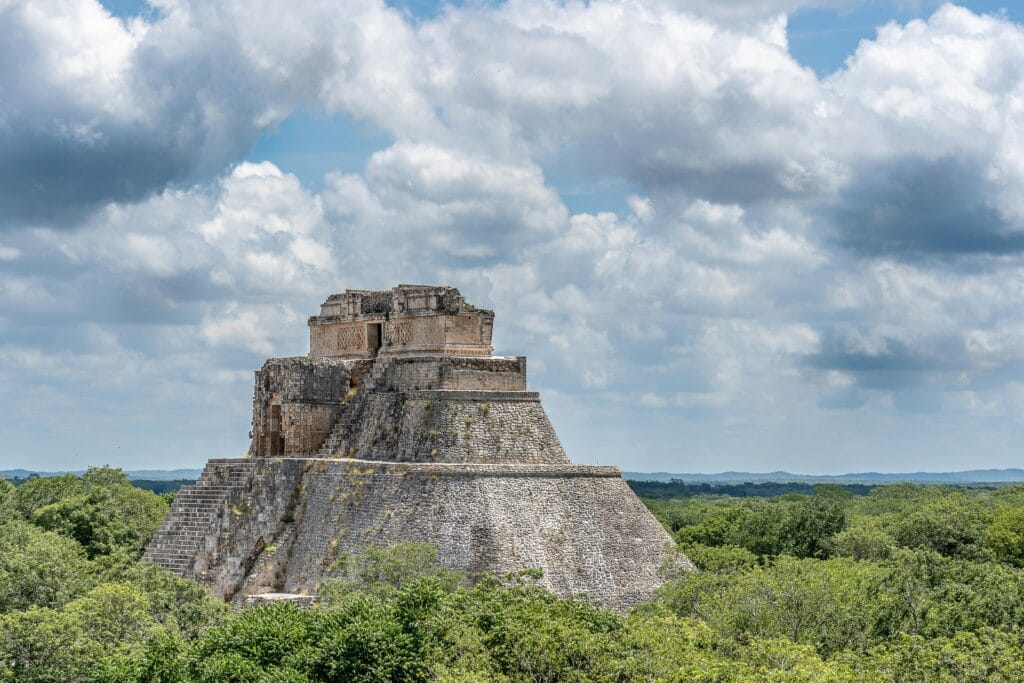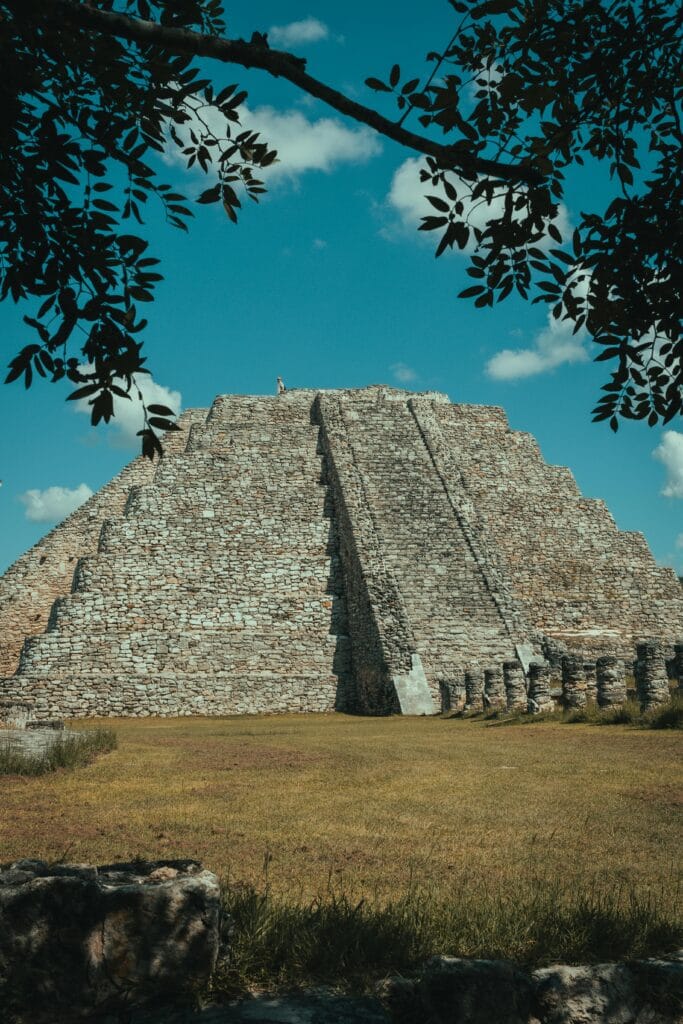Discover ancient Maya secrets hiding in plain sight across Mexico’s most captivating peninsula
While millions flock to Chichen Itza each year, the Yucatán Peninsula harbors dozens of equally spectacular Maya ruins waiting to be explored. These Maya ruins Yucatan offers range from towering jungle pyramids to coastal ceremonial centers, many with just a fraction of the crowds found at the famous sites.
If you’re ready to venture beyond the resort bubble and experience the authentic heart of Maya civilization, this guide reveals the best archaeological sites Yucatan has to offer—including several hidden gems that most travelers never discover.
Why Explore Lesser-Known Maya Sites?
The major Maya ruins of the Yucatán peninsula tell an incredible story spanning over 2,000 years of sophisticated civilization. While Chichen Itza deservedly earns its spot as a Wonder of the World, limiting yourself to just the famous sites means missing out on some truly extraordinary experiences:
- Authentic exploration: Many lesser-known ruins still allow you to climb structures and explore freely
- Photography opportunities: Capture stunning shots without crowds in every frame
- Cultural immersion: Smaller sites often have local guides who share stories passed down through generations
- Adventure factor: Reaching some ruins requires jungle hikes or bike rides through ancient sacbeob (stone roads)
- Budget-friendly: Entry fees are typically much lower than major tourist sites
The Crown Jewels: Must-Visit Maya Ruins in Yucatán
Ek Balam: The Black Jaguar’s Domain
Located just 30 minutes north of Valladolid, Ek Balam represents one of the most significant archaeological discoveries in recent decades. This remarkably well-preserved site was once the capital of a powerful Maya kingdom that dominated the region from 300-1200 CE.
What Makes Ek Balam Special:
- The Acropolis pyramid rises 95 feet above the jungle canopy, offering breathtaking panoramic views
- Incredibly detailed stucco sculptures still visible on many structures, including winged figures and jaguar motifs
- You can still climb to the top of most structures—a rare privilege at Maya sites
- The site museum houses artifacts found during recent excavations, including jade jewelry and ceremonial masks
Visiting Tips:
- Arrive early (8 AM opening) to beat the heat and have structures to yourself
- Bring plenty of water—the climb to the Acropolis is steep but worth every step
- Allow 2-3 hours for a thorough exploration
- Entry fee: $5 USD (much less than Chichen Itza’s $25)
Planning your visit to Ek Balam? Book your stay at one of these highly-rated hotels in nearby Valladolid and experience colonial charm just minutes from ancient Maya wonders.

Coba: Cycle Through Ancient Pathways
Deep in the jungle between Tulum and Valladolid lies Coba, one of the largest Maya cities ever built. What sets Coba apart from other Maya ruins Yucatan sites is its network of ancient stone roads (sacbeob) connecting various temple complexes across 30 square miles of dense jungle.
Coba Highlights:
- Nohoch Mul pyramid stands 138 feet tall—the tallest climbable pyramid in the Yucatán
- Rent a bicycle to explore the site like the ancient Maya traveled their stone highways
- Multiple cenotes within the archaeological zone offer refreshing swimming opportunities
- Active archaeological work continues, with new discoveries happening regularly
The Climbing Experience: The ascent up Nohoch Mul requires careful attention—the steps are steep and worn smooth by centuries of weather. But reaching the top rewards you with a 360-degree view of unbroken jungle canopy stretching to the horizon. On clear days, you can spot other Maya structures poking through the green sea of trees.
Best Time to Visit: Early morning (site opens at 8 AM) or late afternoon provide the most comfortable temperatures for cycling and climbing. The jungle setting means Coba stays cooler than open sites like Chichen Itza, but humidity can be intense by midday.
Maximize your Coba adventure with a guided tour that includes cenote swimming and traditional Maya lunch. Local operators offer small-group experiences that showcase hidden aspects of the site most visitors miss.

Uxmal: Architectural Marvel of the Puuc Hills
Rising from the gentle Puuc Hills in southern Yucatán, Uxmal showcases the pinnacle of Maya architectural achievement. This UNESCO World Heritage site flourished from 600-900 CE and represents the finest example of Puuc architectural style found anywhere in the Maya world.

Architectural Wonders:
- The Pyramid of the Magician’s unique elliptical base defies typical Maya pyramid design
- Palace of the Governor features one of the longest stone facades in pre-Columbian America
- Intricate stone mosaics cover every surface with over 20,000 individually carved pieces
- The Nunnery Quadrangle demonstrates sophisticated understanding of acoustics and astronomy
Beyond the Ruins: Uxmal’s magic extends beyond daylight hours. The evening sound and light show projects colorful illumination onto the ancient stones while narrating the site’s history in multiple languages. This spectacle transforms the ruins into a mystical dreamscape that brings Maya mythology to life.
Practical Information:
- Allow a full day to properly explore Uxmal’s multiple complexes
- The site can be brutally hot—start early and take frequent shade breaks
- Combine with nearby Kabah ruins (connected by ancient sacbe road) for a complete Puuc region experience
- Entry includes access to the evening light show (additional fee applies)
Stay in nearby Mérida and explore Uxmal as part of the Puuc Route that includes four significant archaeological sites. Boutique hotels in Mérida’s historic center offer colonial elegance and easy access to all major Yucatán Maya ruins.
Hidden Gems: Secret Maya Sites Worth the Journey
Dzibilchaltun: Where History Meets the Sea
Just 10 miles north of Mérida, Dzibilchaltun represents one of the longest continuously occupied sites in the Maya world, with evidence of habitation spanning over 2,500 years. This coastal archaeological zone offers a unique combination of ancient ruins and natural swimming opportunities.
Why Dzibilchaltun Stands Out:
- Temple of the Seven Dolls aligns perfectly with the sunrise during spring and autumn equinoxes
- Cenote Xlacah provides crystal-clear swimming in the heart of the archaeological zone
- Museum of the Maya People showcases artifacts spanning the entire timeline of Maya civilization
- Minimal crowds mean you often have entire temple complexes to yourself
The Equinox Experience: Twice yearly, the sun rises directly through the doorway of the Temple of the Seven Dolls, creating a spectacular light show that ancient Maya astronomers planned with mathematical precision. This celestial event draws increasing numbers of visitors, but still remains far less crowded than similar phenomena at Chichen Itza.
Mayapan: The Last Great Maya Capital
Often overlooked despite its historical significance, Mayapan served as the final great Maya capital before the Spanish conquest. This walled city once housed over 15,000 residents and controlled much of northern Yucatán through a confederation of Maya city-states.
Historical Importance:
- Last major Maya city to fall to Spanish colonization (1441 CE)
- El Castillo pyramid clearly shows architectural influence from Chichen Itza
- Well-preserved city walls demonstrate advanced urban planning
- Recent archaeological work has uncovered painted murals and ceremonial caches

Labna, Xlapak, and Sayil: The Puuc Route Treasures
These three interconnected sites along the ancient Puuc Route showcase regional variations in Maya architecture and provide insight into how Maya city-states interacted across the peninsula.
Labna features the most photographed Maya arch in existence, a decorative gateway that has become an icon of Maya architectural sophistication.
Xlapak offers intimate exploration opportunities with just a handful of structures emerging from dense jungle vegetation.
Sayil boasts a three-story palace complex unique in Maya architecture, with over 90 rooms arranged in a sophisticated vertical design.
Planning Your Maya Ruins Adventure
Best Time to Visit Maya Ruins Yucatan
The optimal time for exploring Maya ruins Yucatan sites runs from November through March when temperatures remain comfortable and rainfall is minimal. However, each season offers distinct advantages:
High Season (December-March):
- Perfect weather for climbing pyramids and jungle exploration
- All sites fully accessible with clear roads
- Higher accommodation prices and larger crowds at major sites
Shoulder Season (April-May, October-November):
- Excellent weather with fewer tourists
- Better photography opportunities without crowds
- Moderate accommodation pricing
Low Season (June-September):
- Dramatic afternoon thunderstorms create stunning skies for photography
- Lowest accommodation rates and smallest crowds
- Some remote sites may have accessibility issues during heavy rains
Transportation and Logistics
Rental Car Benefits: Having your own vehicle provides maximum flexibility for visiting multiple best archaeological sites Yucatan offers. Many hidden gems require driving on secondary roads where tour buses can’t access.
Guided Tour Advantages: Local guides bring sites to life with stories, historical context, and access to areas individual visitors might miss. Small-group tours often include cenote swimming and traditional meals.
Public Transportation: Second-class buses connect major sites like Uxmal and Coba to nearby towns, though schedules can be irregular and travel times lengthy.
Book your Maya ruins adventure through established tour operators who specialize in archaeological sites and offer small-group experiences with expert guides.
What to Bring for Maya Site Exploration
Essential Items:
- Plenty of water (sites have limited shade and facilities)
- Sturdy hiking shoes with good grip for climbing pyramids
- Wide-brimmed hat and high-SPF sunscreen
- Insect repellent (especially important at jungle sites like Coba)
- Camera with extra batteries (sites have no charging opportunities)
- Small backpack for carrying supplies during exploration
Climbing Safety: Many Maya pyramids have steep, narrow steps worn smooth by centuries of weather and foot traffic. Take your time ascending and descending, and don’t attempt climbs if you have mobility concerns or fear of heights.
Where to Stay Near Maya Archaeological Sites
Valladolid: Gateway to Eastern Yucatán Ruins
This charming colonial city provides easy access to Ek Balam, Coba, and Chichen Itza while offering authentic Mexican culture and cuisine. Stay in boutique hotels around the central plaza for the full colonial experience.
Mérida: Cultural Capital and Maya Hub
The White City serves as the perfect base for exploring Uxmal, Dzibilchaltun, and the entire Puuc Route. Historic center hotels place you within walking distance of museums, restaurants, and cultural attractions.
Tulum: Coastal Access to Jungle Ruins
While Tulum’s ruins get most attention, the town provides access to Coba and several lesser-known sites. Eco-lodges and boutique hotels offer sustainable luxury amid jungle settings.
Find the perfect accommodation for your Maya ruins exploration with our curated selection of hotels near each archaeological site. Book directly through our partners for best rates and exclusive amenities.
Making the Most of Your Maya Adventure
Photography Tips for Maya Ruins
Golden Hour Magic: The hour after sunrise and before sunset transforms limestone Maya structures into glowing monuments. Plan your visits to major pyramids during these times for the most dramatic photographs.
Composition Techniques:
- Use jungle vegetation to frame structures naturally
- Include people in shots to show the massive scale of Maya architecture
- Capture detail shots of stone carvings and architectural elements
- Wide-angle lenses help capture entire complexes in single frames
Cultural Sensitivity and Respect
Maya culture remains vibrantly alive throughout the Yucatán peninsula. When visiting archaeological sites:
- Follow all posted rules about climbing and touching structures
- Respect any ceremonial activities you might encounter
- Support local communities by purchasing crafts directly from artisans
- Learn basic Maya history to better appreciate what you’re experiencing
Combining Ruins with Natural Wonders
The Yucatán’s Maya ruins Yucatan sits within a landscape riddled with cenotes (natural swimming holes), caves, and ecological preserves. Many archaeological sites can be combined with natural adventures:
- Swim in cenotes near Coba after climbing pyramids
- Explore cave systems that Maya considered entrances to the underworld
- Visit ecological reserves that protect the same forests Maya cities once controlled
- Take guided birdwatching tours in areas where Maya astronomers once studied the skies
The ancient Maya built their cities in a landscape profoundly shaped by geological forces, including the distant, yet impactful, Chicxulub asteroid event that created the region’s unique cenote system.
Your Maya Adventure Awaits
The best archaeological sites Yucatan offers provide windows into one of history’s most sophisticated civilizations while delivering the kind of authentic travel experiences that create lifelong memories. Whether you’re climbing the towering pyramids of Ek Balam, cycling through Coba’s jungle pathways, or watching the sunrise align perfectly through Dzibilchaltun’s ancient doorways, these sites offer something no resort experience can match.
Each Maya ruin tells part of a larger story about human achievement, astronomical knowledge, and cultural sophistication that continues to amaze archaeologists and visitors alike. By venturing beyond the crowded tourist sites, you’ll discover not just ancient stones and jungle pathways, but a deeper connection to the rich cultural heritage that makes the Yucatán peninsula truly unforgettable.


